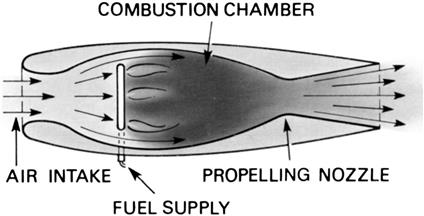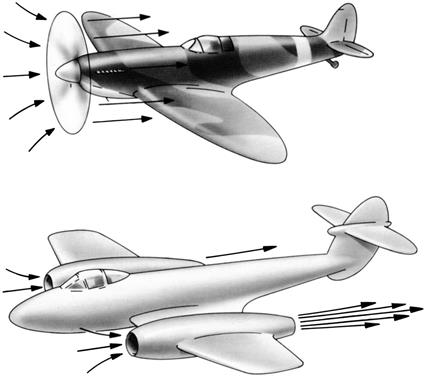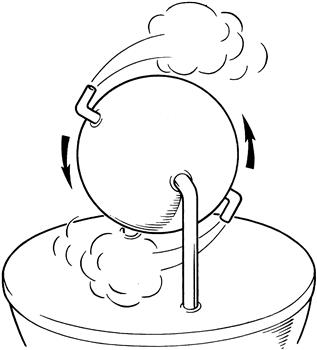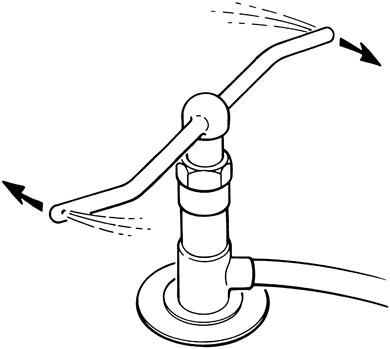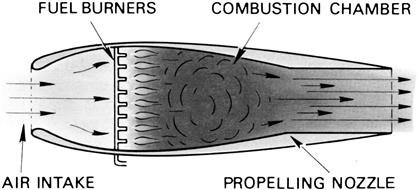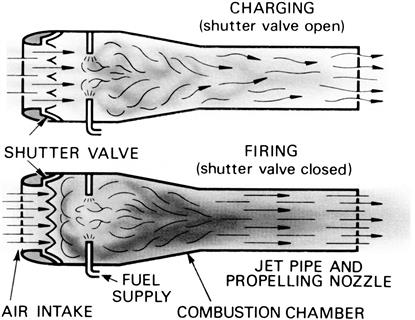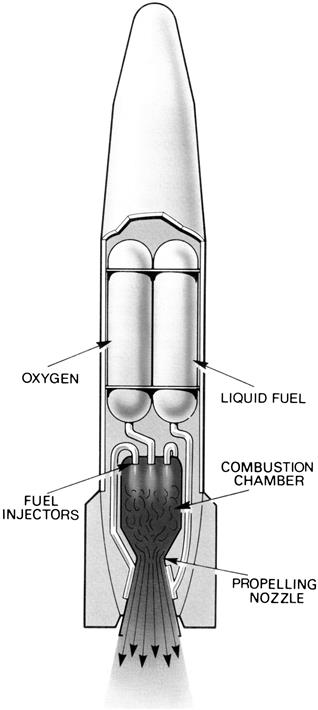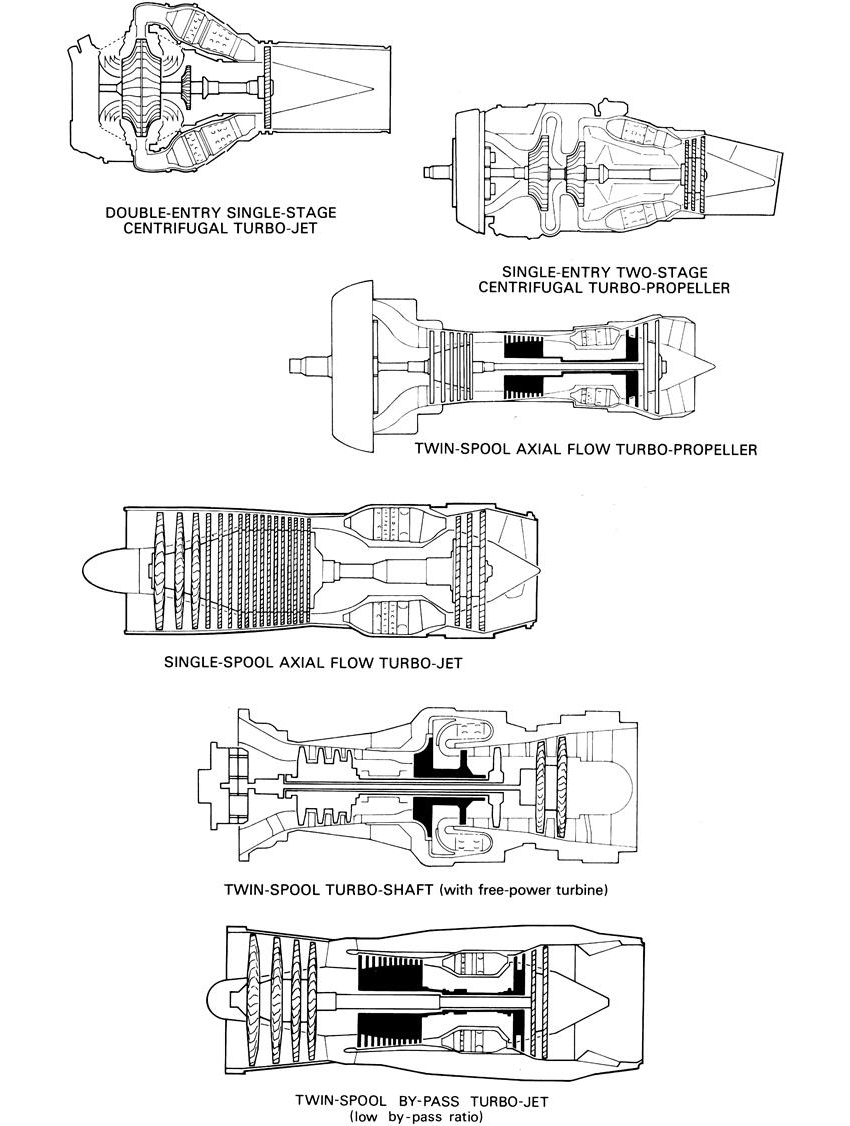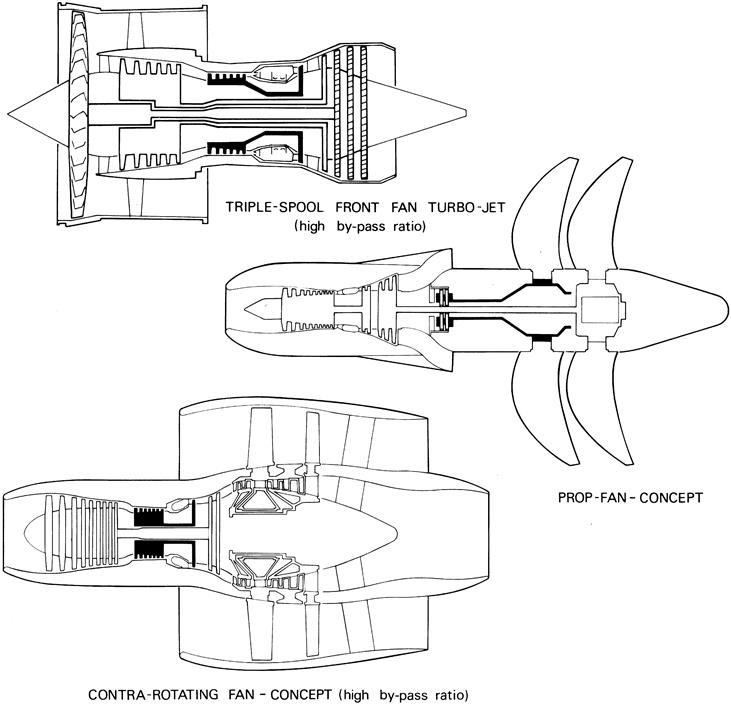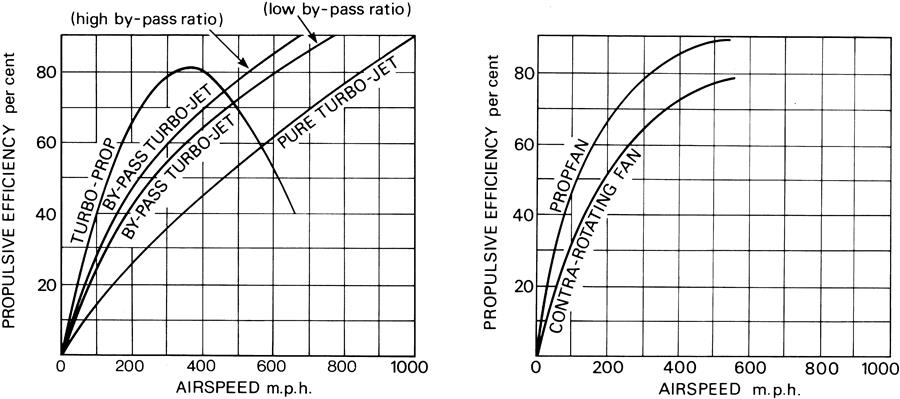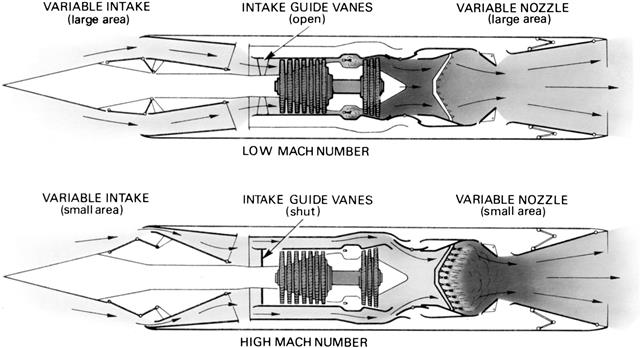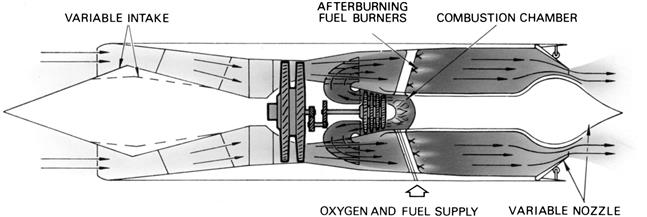Historical Development of the Gas Turbine
Abstract
The development of the gas turbine took place in several countries. Several different schools of thought and contributory designs led up to Frank Whittle’s 1941 gas turbine flight. The development of the gas turbine is a source of great pride to many engineers worldwide and, in some cases, takes on either industry sector fervor (for instance, the aviation versus land-based groups) or claims that are tinged with pride in one’s national roots. People from these various sectors and subsectors can therefore get selective in their reporting. So for understanding the history of the gas turbine, one would have to read several different papers and select material written by personnel from the aviation, and land-based sectors. This chapter covers three different accounts of the gas turbine’s development, each mainly a matter of perspective.
Keywords
Jet propulsion; history of gas turbine; microturbines; aircraft engine development; on-land/surface vehicles
“I only hope that we never lose sight of one thing—that it was all started by a mouse.”
—Walt Disney
Early History of the Gas Turbines
The development of the gas turbine took place in several countries. Several different schools of thought and contributory designs led up to Frank Whittle’s 1941 gas turbine flight. Despite the fact that NASA’s development budget now trickles down to feed the improvement of flight, land-based, and marine engines, the world’s first jet engine owed much to early private aircraft engine pioneers and some lower profile land-based developments.
The development of the gas turbine is a source of great pride to many engineers worldwide and, in some cases, takes on either industry sector fervor (for instance, the aviation versus land-based groups) or claims that are tinged with pride in one’s national roots. People from these various sectors and subsectors can therefore be selective in their reporting.
So for understanding the history of the gas turbine, one would have to read several different papers and select material written by personnel from the aviation and land-based sectors. At that point, one can “fill in the gaps.”
What follows therefore are three different accounts of the gas turbine’s development. Each version is correct; it is mainly a matter of perspective.
Land-Based Gas Turbine Development Perspective
The first timeline contains many of the relevant land-based gas turbine design developments.1 Note that this also contains some timeline references to aircraft engine development.
Switzerland (and Swiss abroad, in italics)
1921 J. Ackeret, high-speed aerodynamics scientist at ETH Zurich, arrives at L. Prandtl’s AVA (Aerodynamische Versuchs-Anstalt), Gottingen; stays seven years.
1925 CEM (G. Darrieus), a French subsidiary of BBC (Brown Boveri Company), produces a series of windmills, using airfoil design theory.
1926 BBC’s four-stage axial test compressor designed, first with untwisted blades, later swirl adapted.
1932 BBC sold a number of 11-stage axial compressors, PR = 3.4, for the Mondeville project and high-speed windtunnels at ETH-Zurich and Rome.
1934 C. Keller, assistant to J. Ackeret at ETH Zurich, designed one of the windtunnel blowers (second blower for high-speed tunnel came from BBC).
1939 A. Meyer, BBC’s technical director, presents a comprehensive paper on GT design achievements (including gas turbine usage for compact and lightweight ship/destroyer propulsion) at the Institute of Mechanical Engineering, London. First commercial industrial gas turbine (GT) from BBC is operational at Neuchâtel. BBC delivers first industrial GT to RAE, 1.6 MW, 20-stage axial compressor. In 1940, BBC delivers axial aircraft superchargers, 190 hp, PR = 2.5, to complete a Rolls Royce (RR) purchase order.
Germany (and Germans abroad)
1922 W. Bauersfeld suggests the use of airfoil theory for fluid machinery.
1935(?) At AVA Gottingen, a four-stage axial turbocharger, seven-stage compressor design undergoes development (Encke et al. design), PR = 3.8 [in production PR = 3.1].
1935 H. P. von Ohain gets a secret turbo-engine patent no. 317/38.
1937 H. P. von Ohain’s test engine HeS313 runs.
1939 The first jet-powered flight He 178 aircraft with HeS313, on Sunday August 27, 1939. R. Friedrich, Junkers Magdeburg, designs the 14-stage axial compressor for the RTO engine (Riickstoss-Turbine ohne Leistungsabgabe with a propeller), for the helium aircraft S30 engine, based on a Gottingen airfoil design.
1942 Me 262 fighter aircraft enters service with two Jumo 004 engines, first test flight on August 18.
England (and English abroad, in italics)
1926 A. A. Griffith releases “An Aerodynamic Theory of Turbine Design,” which discusses a GT as an aircraft’s power plant.
1930 F. Whittle gets the first patent for a turbo aeroengine. Tizard, Gibson & Glauert committee denies that the gas turbine could be superior to the piston engine.
1937 F. Whittle, radial compression engine, has a test run on December 4.
1938 A delegation at BBC decides that “Exclusivity on the BBC (axial) compressor design would not be granted.”
1941 The Whittle engine has its first flight.
Note that, in the early 1930s, BBC designed components used for the Velox project boilers. It developed a turbine that had enough power to drive the compressor and could generate excess power through the inverse operation of the electric starter motor. Also, in 1936, BBC’s 4 MW all-axial process gas turbine/blower train with PR = 4 was supplied to a US refinery. In July 1939, BBC commissioned the world’s first utility gas turbine at Neuchâtel, Switzerland. The gas turbine had one 23-stage axial compressor, one single-can combustor, one 7-stage axial turbine, and a synchronously operated generator on the same shaft (Figure 2–1).
Aircraft Engine Development: A US Perspective
The second timeline presents an aircraft engine development perspective (more a US perspective).2
Attempts to develop gas turbines were first undertaken in the early 1900s, with pioneering work done in Germany. The most successful early gas turbines were built by Holzwarth who developed a series of models between 1908 and 1933. The first industrial application of a gas turbine was installed in a steel works in Hamborn, Germany, in 1933. In 1939, a gas turbine was installed in a power plant in Neuchâtel.
1925 R. E. Lasley of Allis-Chalmers receives the first of several patents on gas turbines. Around 1930 he forms the Lasley Turbine Motor Company in Waukegan, Illinois, with a goal of producing a gas turbine for aircraft propulsion.
1929 Haynes Stellite develops Hastelloy alloy for turbine buckets, allowing operation up to gas temperatures of over 1800°F. This superior alloy was later crucial to the successful operation of the I-A and it gave US turbine manufacturers the ability to use uncooled designs rather than include the complexity of blade cooling.
1931 US Army awards GE a turbine-powered turbosupercharger development contract.
1934 US Army personnel from Wright Field visit Lasley’s shop and inspect his hardware and the engine he had filmed in operation earlier that year. However, neither the Army nor Navy would fund Lasley.
1935 US Army, Northrop, TWA, and GE combine to test fly a Northrop Gamma at 37,000 feet from Kansas City to Dayton. This led to a production contract for GE to build 230 units of the “Type B” supercharger and to establishment of the GE Supercharger Department in Lynn, Massachusetts (later the site of the I-A development based on the Whittle engine).
1938 Wright Aeronautical Corporation designs its own vaned superchargers for its own engines, although the superchargers were manufactured for Wright by GE.
1939 GE studies gas turbine aircraft propulsion options and concludes the turbojet is preferable to the turboprop. Note, however, that two years later the company changed its mind and proposed a turboprop to the Durand Committee.
1940 NACA joins with Wright, Allison, and P&W to standardize turbosupercharger testing techniques.
1941 GE Steam Turbine Division (Schenectady) participates in the Durand Special Committee on Jet Propulsion and proposes a turboprop, designated the TG-100 (later the T31), which ran successfully in May 1943 under Army sponsorship.
1941 GE Turbosupercharger Division (Lynn, Massachusetts) receives the Whittle W.1.X engine and drawings for the W.2.B improved version. A top-secret effort begins to build an improved version, known as the I-A, for flight test in the Bell P-59.
1941 The Durand Committee also awards Navy contracts to Allis-Chalmers and Westinghouse. The Westinghouse W19, a small booster turbojet, resulted from this but Allis-Chalmers dropped out of the “gas turbine race” in 1943.
1942 In April, the GE I-A runs for the first time in a Lynn test cell. In October, it powers the Bell P-59 on its first flight at Muroc Dry Lake, California.
By the latter part of 1942, the following “native” aircraft gas turbine efforts were proceeding. These projects included:
1. Northrop Turbodyne turboprop
3. GE/Schenectady TG-100 turboprop
4. Allis-Chalmers turbine-driven ducted fan
Ultimately, the history of gas turbines is a subject that has almost as many versions as there are engineer historians. Each person credits one development more or less than another and every account has some merit. Also of interest is the following perspective, in a more narrative style.
The development3 of the gas turbine engine as an aircraft power plant has been so rapid that it is difficult to appreciate that, prior to the 1950s, very few people had heard of this method of aircraft propulsion. The possibility of using a reaction jet had interested aircraft designers for a long time, but initially the low speeds of early aircraft and the unsuitability of a piston engine for producing the large high velocity airflow necessary for the “jet” presented many obstacles.
A French engineer, René Lorin, patented a jet propulsion engine (Figure 2–2) in 1913, but this was an athodyd and was at that period impossible to manufacture or use, since suitable heat resisting materials had not then been developed. In the second place, jet propulsion would have been extremely inefficient at the low speeds of the aircraft of those days. However, today the modern ramjet is very similar to Lorin’s conception.
In 1930, Frank Whittle was granted his first patent for using a gas turbine to produce a propulsive jet, but it was 11 years before his engine completed its first flight. The Whittle engine formed the basis of the modern gas turbine engine and from it was developed the Rolls Royce Welland, Derwent, Nene, and Dart engines. The Derwent and Nene turbojet engines had worldwide military applications; the Dart turbopropeller engine became world famous as the power plant for the Vickers Viscount aircraft. Although other aircraft may be fitted with later engines termed twin-spool, triple-spool, by-pass, ducted fan, unducted fan, and propfan, these are inevitable developments of Whittle’s early engine.
The jet engine (Figure 2–3), although appearing so different from the piston engine/propeller combination, applies the same basic principles to effect propulsion. As shown in Figure 2–5, both propel their aircraft solely by thrusting a large weight of air backwards.
Although today jet propulsion is popularly linked with the gas turbine engine, there are other types of jet-propelled engines, such as the ramjet, the pulse jet, the rocket, the turbo/ramjet, and the turborocket.
Principles of Jet Propulsion
Jet propulsion is a practical application of Sir Isaac Newton’s third law of motion, which states that, “for every force acting on a body there is an opposite and equal reaction.” For aircraft propulsion, the “body” is atmospheric air that is caused to accelerate as it passes through the engine. The force required to give this acceleration has an equal effect in the opposite direction acting on the apparatus producing the acceleration. A jet engine produces thrust in a similar way to the engine/propeller combination. Both propel the aircraft by thrusting a large weight of air backwards (Figure 2–4), one in the form of a large air slipstream at comparatively low speed and the other in the form of a jet of gas at very high speed.
This same principle of reaction occurs in all forms of movement and has been usefully applied in many ways. The earliest known example of jet reaction is that of Hero’s engine (Figure 2–5) produced as a toy in 120 BC. This toy showed how the momentum of steam issuing from a number of jets could impart an equal and opposite reaction to the jets themselves, thus causing the engine to revolve.
The familiar whirling garden sprinkler (Figure 2–6) is a more practical example of this principle, for the mechanism rotates by virtue of the reaction to the water jets. The high-pressure jets of modern firefighting equipment are an example of “jet reaction,” for often, due to the reaction of the water jet, the hose cannot be held or controlled by one firefighter. Perhaps the simplest illustration of this principle is afforded by the carnival balloon, which when the air or gas is released, rushes rapidly away in the direction opposite to the jet.
Jet reaction is definitely an internal phenomenon and does not, as is frequently assumed, result from the pressure of the jet on the atmosphere. In fact, the jet propulsion engine, whether rocket, athodyd, or turbojet, is a piece of apparatus designed to accelerate a stream of air or gas and to expel it at high velocity. There are, of course, a number of ways of doing this, as described next, but in all instances the resultant reaction or thrust exerted on the engine is proportional to the mass or weight of air expelled by the engine and the velocity change imparted to it. In other words, the same thrust can be provided either by giving a large mass of air a little extra velocity or a small mass of air a large extra velocity. In practice the former is preferred, since by lowering the jet velocity relative to the atmosphere, a higher propulsive efficiency is obtained.
Methods of Jet Propulsion
The types of jet engine, whether ramjet, pulse jet, rocket, gas turbine, turbo/ramjet, or turborocket, differ only in the way in which the “thrust provider,” or engine, supplies and converts the energy into power for flight.
The ramjet engine (Figure 2–7) is an athodyd, or aero-thermodynamic-duct to give it its full name. It has no major rotating parts and consists of a duct with a divergent entry and a convergent or convergent/divergent exit. When forward motion is imparted to it from an external source, air is forced into the air intake, where it loses velocity or kinetic energy and increases its pressure energy as it passes through the diverging duct. The total energy is then increased by the combustion of fuel and the expanding gases accelerate to atmosphere through the outlet duct. A ramjet is often the power plant for missiles and target vehicles but is unsuitable as an aircraft power plant because it requires forward motion imparting to it before any thrust is produced.
The pulse jet engine (Figure 2–8) uses the principle of intermittent combustion, and unlike the ramjet, it can be run at a static condition. The engine is formed by an aerodynamic duct similar to the ramjet but, due to the higher pressures involved, it is of more robust construction. The duct inlet has a series of inlet “valves” that are spring-loaded into the open position. Air drawn through the open valves passes into the combustion chamber and is heated by the burning of fuel injected into the chamber. The resulting expansion causes a rise in pressure, forcing the valves to close, and the expanding gases are then ejected rearwards. A depression created by the exhausting gases allows the valves to open and repeat the cycle. Pulse jets have been designed for helicopter rotor propulsion and some dispense with inlet valves by careful design of the ducting to control the changing pressures of the resonating cycle. The pulse jet is unsuitable as an aircraft power plant because it has a high fuel consumption and is unable to equal the performance of the modern gas turbine engine.
Although a rocket engine (Figure 2–9) is a jet engine, it has one major difference in that it does not use atmospheric air as the propulsive fluid stream. Instead, it produces its own propelling fluid by the combustion of liquid or chemically decomposed fuel with oxygen, which it carries, thus enabling it to operate outside the earth’s atmosphere. It is, therefore, suitable only for operation over short periods.
The application of the gas turbine to jet propulsion has avoided the inherent weakness of the rocket and the athodyd, for by the introduction of a turbine-driven compressor, a means of producing thrust at low speeds is provided. The turbo-jet engine operates on the “working cycle” as already described. It draws air from the atmosphere, and after compressing and heating it, a process that occurs in all heat engines, the energy and momentum given to the air forces it out of the propelling nozzle at a velocity of up to 2000 feet per second or about 1400 miles per hour. On its way through the engine, the air gives up some of its energy and momentum to drive the turbine that powers the compressor.
The mechanical arrangement of the gas turbine engine is simple, for it consists of only two main rotating parts, a compressor and a turbine, and one or a number of combustion chambers. The mechanical arrangement of various gas turbine engines is shown in Figure 2–10. This simplicity, however, does not apply to all aspects of the engine, for as described in subsequent sections, the thermo- and aerodynamic problems are somewhat complex. They result from the high operating temperatures of the combustion chamber and turbine, the effects of varying flows across the compressor and turbine blades, and the design of the exhaust system through which the gases are ejected to form the propulsive jet.
At aircraft speeds below approximately 450 miles per hour, the pure jet engine is less efficient than a propeller-type engine, since its propulsive efficiency depends largely on its forward speed; the pure turbojet engine is, therefore, most suitable for high forward speeds. The propeller efficiency does, however, decrease rapidly above 350 miles per hour due to the disturbance of the airflow caused by the high blade-tip speeds of the propeller. These characteristics have led to some departure from the use of pure turbojet propulsion, where aircraft operate at medium speeds by the introduction of a combination of propeller and gas turbine engine.
The advantages of the propeller/turbine combination have to some extent been offset by the introduction of the bypass, ducted fan, and propfan engines. These engines deal with larger comparative airflows and lower jet velocities than the pure jet engine, thus giving a propulsive efficiency that is comparable to that of the turboprop and exceeds that of the pure jet engine (Figure 2–11).
The turbo/ramjet engine (Figure 2–12) combines the turbojet engine (which is used for speeds up to Mach 3) with the ramjet engine, which has good performance at high Mach numbers.
The engine is surrounded by a duct that has a variable intake at the front and an afterburning jet pipe with a variable nozzle at the rear. During takeoff and acceleration, the engine functions as a conventional turbojet with the afterburner lit; at other flight conditions up to Mach 3, the afterburner is inoperative. As the aircraft accelerates through Mach 3, the turbojet is shut down and the intake air is diverted from the compressor, by guide vanes, and ducted straight into the afterburning jet pipe, which becomes a ramjet combustion chamber. This engine is suitable for an aircraft requiring high speed and sustained high Mach number cruise conditions where the engine operates in the ramjet mode.
The turborocket engine (Figure 2–13) could be considered as an alternative engine to the turbo/ramjet; however, it has one major difference in that it carries its own oxygen to provide combustion.
The engine has a low-pressure compressor driven by a multistage turbine; the power to drive the turbine is derived from combustion of kerosene and liquid oxygen in a rocket-type combustion chamber. Since the gas temperature will be on the order of 3500°C, additional fuel is sprayed into the combustion chamber for cooling purposes before the gas enters the turbine. This fuel-rich mixture (gas) is then diluted with air from the compressor and the surplus fuel burned in a conventional afterburning system.
Although the engine is smaller and lighter than the turbo/ramjet, it has higher fuel consumption. This tends to make it more suitable for an interceptor or space-launcher-type of aircraft that requires high speed, high altitude performance, and normally has a flight plan that is entirely accelerative and of short duration.
The Gas Turbine Global Fleet: Model Designation and Production Prognosis as of 2013–2022
The following appendices indicate the current complexity of the gas turbine market in terms of different models, sizes, and applications. The appendices for the first edition have been left in, so that the reader can gauge the shift in the gas turbine market over the last several years.
Appendix 2A-1: Gas Turbine Engines Powering Aircraft: Aircraft Engine Production4
| Company | Description | Total Units 2013–2022 |
| Aviadvigatel OJSC | TF | 3 |
| Aviadvigatel OJSC | TF | 13 |
| Aviadvigatel OJSC | TF | 17 |
| Aviadvigatel OJSC | TF | 87 |
| Aviadvigatel OJSC | TF | 120 |
| Avio SpA | TS | 91 |
| Avio SpA | TS | 142 |
| Avio SpA | TS | 233 |
| CFM International Inc | TF | 156 |
| CFM International Inc | TF | 21 |
| CFM International Inc | TF | 253 |
| CFM International Inc | TF | 1728 |
| CFM International Inc | TF | 12 |
| CFM International Inc | TF | 19 |
| CFM International Inc | TF | 23 |
| CFM International Inc | TF | 50 |
| CFM International Inc | TF | 57 |
| CFM International Inc | TF | 246 |
| CFM International Inc | TF | 518 |
| CFM International Inc | TF | 921 |
| CFM International Inc | TF | 3513 |
| CFM International Inc | TF | 38 |
| CFM International Inc | TF | 513 |
| CFM International Inc | TF | 1035 |
| CFM International Inc | TF | 4135 |
| CFM International Inc | TF | 13238 |
| China Aviation Gas Turbine Co Ltd | TJ | 226 |
| China National South Aeroengine Co | TP | 132 |
| 358 | ||
| Dongan Engine Manufacturing Company | TP | 21 |
| Dongan Engine Manufacturing Company | TP | 33 |
| Dongan Engine Manufacturing Company | TP | 54 |
| Eurojet Turbo GmbH | TF | 85 |
| Eurojet Turbo GmbH | TF | 358 |
| Eurojet Turbo GmbH | TF | 443 |
| Europrop International GmbH | TP | 964 |
| GE Aviation | TF | 122 |
| GE Aviation | TF | 234 |
| GE Aviation | TF | 82 |
| GE Aviation | TF | 890 |
| GE Aviation | TF | 380 |
| GE Aviation | TF | 79 |
| GE Aviation | TF | 351 |
| GE Aviation | TF | 269 |
| GE Aviation | TF | 296 |
| GE Aviation | TF | 25 |
| GE Aviation | TF | 174 |
| GE Aviation | TF | 57 |
| GE Aviation | TF | 138 |
| GE Aviation | TF | 3 |
| GE Aviation | TS | 365 |
| GE Aviation | TS | 318 |
| GE Aviation | TS | 396 |
| GE Aviation | TS | 36 |
| GE Aviation | TS | 26 |
| GE Aviation | TS | 13 |
| GE Aviation | TS | 37 |
| GE Aviation | TS | 152 |
| GE Aviation | TS | 77 |
| GE Aviation | TP | 50 |
| GE Aviation | TP | 127 |
| GE Aviation | TF | 12 |
| GE Aviation | TF | 202 |
| GE Aviation | TF | 31 |
| GE Aviation | TF | 85 |
| GE Aviation | TF | 117 |
| GE Aviation | TF | 38 |
| GE Aviation | TF | 52 |
| GE Aviation | TF | 81 |
| GE Aviation | TF | 193 |
| GE Aviation | TF | 128 |
| GE Aviation | TS | 323 |
| GE Aviation | TF | 6 |
| GE Aviation | TF | 47 |
| GE Aviation | TF | 370 |
| GE Aviation | TF | 1279 |
| GE Aviation | TF | 90 |
| GE Aviation | TF | 580 |
| GE Aviation | TF | 1099 |
| GE Aviation | TF | 396 |
| GE Aviation | TF | 311 |
| GE Aviation | TS | 189 |
| GE Aviation | TS | 357 |
| GE Aviation | TS | 4 |
| GE Aviation | TS | 9 |
| GE Aviation | TS | 107 |
| GE Aviation | TS | 167 |
| GE Aviation | TS | 274 |
| GE Aviation | TS | 4 |
| GE Aviation | TS | 40 |
| GE Aviation | TS | 530 |
| GE Aviation | TS | 33 |
| GE Aviation | TS | 82 |
| GE Aviation | TS | 469 |
| GE Aviation | TS | 1416 |
| GE Aviation | TF/TP/TS | 13818 |
| GE Aviation Czech s.r.o. | TP | 58 |
| GE Aviation Czech s.r.o. | TP | 260 |
| GE Aviation Czech s.r.o. | TP | 318 |
| GE Honda Aero Engines LLC | TF | 973 |
| GE-P&W Engine Alliance LLC | TF | 713 |
| Hindustan Aeronautics Ltd—Engine Division | TJ | 226 |
| Honeywell Aerospace | TF | 331 |
| Honeywell Aerospace | TF | 194 |
| Honeywell Aerospace | TF | 431 |
| Honeywell Aerospace | TF | 397 |
| Honeywell Aerospace | TF | 478 |
| Honeywell Aerospace | TS | 19 |
| Honeywell Aerospace | TS | 36 |
| Honeywell Aerospace | TS | 541 |
| Honeywell International Inc | TS | 33 |
| Honeywell International Inc | TF | 54 |
| Honeywell International Inc | TF | 12 |
| Honeywell International Inc | TF | 45 |
| Honeywell International Inc | TF | 247 |
| Honeywell International Inc | TF | 307 |
| Honeywell International Inc | TF | 362 |
| Honeywell International Inc | TF | 303 |
| Honeywell International Inc | TP | 11 |
| Honeywell International Inc | TP | 3 |
| Honeywell International Inc | TP | 26 |
| Honeywell International Inc | TP | 62 |
| Honeywell International Inc | TP | 198 |
| Honeywell International Inc | TP | 20 |
| Honeywell International Inc | TP | 50 |
| Honeywell | TF/TP/TS | 4160 |
| IHI Aerospace Co Ltd | TF | 131 |
| IHI Corporation | TS | 36 |
| IHI Corporation | TS | 70 |
| IHI Corporation | TS | 16 |
| IHI Corporation | TS | 8 |
| IHI Corporation | TF/TS | 261 |
| International Aero Engines AG (IAE) | TF | 1412 |
| International Aero Engines AG (IAE) | TF | 133 |
| International Aero Engines AG (IAE) | TF | 194 |
| International Aero Engines AG (IAE) | TF | 580 |
| International Aero Engines AG (IAE) | TF | 2319 |
| Kawasaki Heavy Industries (KHI)—Gas Turbine Division | TS | 16 |
| Klimov Corporation | TF | 28 |
| Klimov Corporation | TF | 218 |
| Klimov Corporation | TF | 192 |
| Klimov Corporation | TS | 375 |
| Klimov Scientific Industrial Enterprise | TS | 200 |
| Klimov Scientific Industrial Enterprise | TS | 91 |
| Klimov Scientific Industrial Enterprise | TS | 186 |
| Klimov Scientific Industrial Enterprise | TS | 1953 |
| Klimov Scientific Industrial Enterprise | TS | 2617 |
| Klimov Scientific Industrial Enterprise | TS | 433 |
| Klimov | TF/TS | 6293 |
| Light Helicopter Turbine Engine Co (LHTEC) | TS | 12 |
| Light Helicopter Turbine Engine Co (LHTEC) | TS | 114 |
| Light Helicopter Turbine Engine Co (LHTEC) | TS | 210 |
| Light Helicopter Turbine Engine Co (LHTEC) | TS | 336 |
| Microturbo Inc | TJ | 100 |
| Microturbo Inc | TJ | 365 |
| Microturbo Inc | TJ | 303 |
| Microturbo Ltd | TJ | 151 |
| Microturbo SA | TJ | 378 |
| Microturbo SA | TJ | 598 |
| Microturbo SA | TJ | 217 |
| Microturbo SA | TJ | 443 |
| Microturbo SA | TJ | 2555 |
| Mitsubishi Heavy Industries Ltd (MHI) | TJ | 33 |
| Mitsubishi Heavy Industries Ltd (MHI) | TJ | 15 |
| Mitsubishi Heavy Industries Ltd (MHI) | TJ | 44 |
| Mitsubishi Heavy Industries Ltd (MHI) | TJ | 92 |
| Motor Sich JSC/Progress (ZMKB) | TF | 167 |
| Motor Sich JSC/Progress (ZMKB) | TF | 290 |
| Motor Sich JSC/Progress (ZMKB) | TP | 130 |
| Motor Sich JSC/Progress (ZMKB) | TS | 77 |
| Motor Sich JSC/Progress (ZMKB) | TP | 9 |
| Motor Sich JSC/Progress (ZMKB) | TF | 133 |
| Motor Sich JSC/Progress (ZMKB) | TF/TP | 806 |
| MTU Turbomeca Rolls-Royce (MTR) GmbH | TS | 38 |
| MTU Turbomeca Rolls-Royce (MTR) GmbH | TS | 59 |
| MTU Turbomeca Rolls-Royce (MTR) GmbH | TS | 92 |
| MTU Turbomeca Rolls-Royce (MTR) GmbH | TS | 93 |
| MTU Turbomeca Rolls-Royce (MTR) GmbH | TS | 282 |
| Nationalist Chinese Arsenals | TJ | 400 |
| NPO Saturn OJSC | TF | 802 |
| NPO Saturn OJSC | TF | 290 |
| NPO Saturn OJSC | TF | 130 |
| NPO Saturn OJSC | TF | 1222 |
| PowerJet JSC | TF | 458 |
| Pratt & Whitney | TF | 14 |
| Pratt & Whitney | TF | 50 |
| Pratt & Whitney | TF | 4 |
| Pratt & Whitney | TF | 17 |
| Pratt & Whitney | TF | 66 |
| Pratt & Whitney | TF | 150 |
| Pratt & Whitney | TF | 230 |
| Pratt & Whitney | TF | 921 |
| Pratt & Whitney | TF | 737 |
| Pratt & Whitney | TF | 265 |
| Pratt & Whitney | TF | 329 |
| Pratt & Whitney | TF | 2776 |
| Pratt & Whitney | TF | 798 |
| Pratt & Whitney | TF | 17 |
| Pratt & Whitney | TF | 19 |
| Pratt & Whitney | TF | 278 |
| Pratt & Whitney | TF | 8 |
| Pratt & Whitney | TF | 23 |
| Pratt & Whitney | TF | 70 |
| Pratt & Whitney AeroPower | TJ | 3594 |
| Pratt & Whitney | TJ/TF | 10366 |
| Pratt & Whitney Canada | TP | 148 |
| Pratt & Whitney Canada | TP | 92 |
| Pratt & Whitney Canada | TP | 50 |
| Pratt & Whitney Canada | TP | 36 |
| Pratt & Whitney Canada | TP | 119 |
| Pratt & Whitney Canada | TP | 72 |
| Pratt & Whitney Canada | TP | 879 |
| Pratt & Whitney Canada | TP | 365 |
| Pratt & Whitney Canada | TP | 124 |
| Pratt & Whitney Canada | TP | 71 |
| Pratt & Whitney Canada | TP | 126 |
| Pratt & Whitney Canada | TP | 184 |
| Pratt & Whitney Canada | TP | 357 |
| Pratt & Whitney Canada | TP | 56 |
| Pratt & Whitney Canada | TP | 186 |
| Pratt & Whitney Canada | TP | 417 |
| Pratt & Whitney Canada | TP | 324 |
| Pratt & Whitney Canada | TP | 745 |
| Pratt & Whitney Canada | TP | 984 |
| Pratt & Whitney Canada | TP | 33 |
| Pratt & Whitney Canada | TP | 30 |
| Pratt & Whitney Canada | TP | 22 |
| Pratt & Whitney Canada | TP | 65 |
| Pratt & Whitney Canada | TP | 424 |
| Pratt & Whitney Canada | TP | 412 |
| Pratt & Whitney Canada | TP | 115 |
| Pratt & Whitney Canada | TP | 151 |
| Pratt & Whitney Canada | TP | 782 |
| Pratt & Whitney Canada | TP | 100 |
| Pratt & Whitney Canada | TP | 118 |
| Pratt & Whitney Canada | TP | 140 |
| Pratt & Whitney Canada | TP | 198 |
| Pratt & Whitney Canada | TS | 243 |
| Pratt & Whitney Canada | TS | 568 |
| Pratt & Whitney Canada | TS | 196 |
| Pratt & Whitney Canada | TS | 1374 |
| Pratt & Whitney Canada | TS | 55 |
| Pratt & Whitney Canada | TP | 66 |
| Pratt & Whitney Canada | TP | 16 |
| Pratt & Whitney Canada | TP | 153 |
| Pratt & Whitney Canada | TP | 162 |
| Pratt & Whitney Canada | TP | 260 |
| Pratt & Whitney Canada | TP | 17 |
| Pratt & Whitney Canada | TP | 109 |
| Pratt & Whitney Canada | TP | 1344 |
| Pratt & Whitney Canada | TP | 875 |
| Pratt & Whitney Canada | TS | 62 |
| Pratt & Whitney Canada | TS | 304 |
| Pratt & Whitney Canada | TS | 1097 |
| Pratt & Whitney Canada | TS | 71 |
| Pratt & Whitney Canada | TS | 73 |
| Pratt & Whitney Canada | TS | 134 |
| Pratt & Whitney Canada | TS | 927 |
| Pratt & Whitney Canada | TS | 134 |
| Pratt & Whitney Canada | TS | 315 |
| Pratt & Whitney Canada | TS | 809 |
| Pratt & Whitney Canada | TF | 9 |
| Pratt & Whitney Canada | TF | 8 |
| Pratt & Whitney Canada | TF | 425 |
| Pratt & Whitney Canada | TF | 1317 |
| Pratt & Whitney Canada | TF | 549 |
| Pratt & Whitney Canada | TF | 9 |
| Pratt & Whitney Canada | TF | 29 |
| Pratt & Whitney Canada | TF | 103 |
| Pratt & Whitney Canada | TF | 1028 |
| Pratt & Whitney Canada | TF | 474 |
| Pratt & Whitney Canada | TF | 1297 |
| Pratt & Whitney Canada | TF | 1165 |
| Pratt & Whitney Canada | TF/TP/TS | 23702 |
| Rolls-Royce Corp | TP | 33 |
| Rolls-Royce Corp | TP | 12 |
| Rolls-Royce Corp | TP | 50 |
| Rolls-Royce Corp | TS | 66 |
| Rolls-Royce Corp | TS | 54 |
| Rolls-Royce Corp | TS | 11 |
| Rolls-Royce Corp | TS | 25 |
| Rolls-Royce Corp | TS | 26 |
| Rolls-Royce Corp | TS | 10 |
| Rolls-Royce Corp | TS | 22 |
| Rolls-Royce Corp | TS | 35 |
| Rolls-Royce Corp | TS | 38 |
| Rolls-Royce Corp | TS | 128 |
| Rolls-Royce Corp | TS | 101 |
| Rolls-Royce Corp | TS | 115 |
| Rolls-Royce Corp | TS | 49 |
| Rolls-Royce Corp | TS | 825 |
| Rolls-Royce Corp | TS | 7 |
| Rolls-Royce Corp | TP | 28 |
| Rolls-Royce Corp | TP | 39 |
| Rolls-Royce Corp | TP | 155 |
| Rolls-Royce Corp | TP | 508 |
| Rolls-Royce Corp | TP | 512 |
| Rolls-Royce Corp | TP | 30 |
| Rolls-Royce Corp | TF | 2 |
| Rolls-Royce Corp | TF | 3 |
| Rolls-Royce Corp | TF | 3 |
| Rolls-Royce Corp | TF | 4 |
| Rolls-Royce Corp | TF | 5 |
| Rolls-Royce Corp | TF | 6 |
| Rolls-Royce Corp | TF | 6 |
| Rolls-Royce Corp | TF | 33 |
| Rolls-Royce Corp | TF | 41 |
| Rolls-Royce Corp | TF | 530 |
| Rolls-Royce Corp | TF | 13 |
| Rolls-Royce Corp | TS | 16 |
| Rolls-Royce Corp | TS | 41 |
| Rolls-Royce Corp | TS | 365 |
| Rolls-Royce Corp | TS | 2782 |
| Rolls-Royce Corp | TP | 140 |
| Rolls-Royce plc | TF | 91 |
| Rolls-Royce plc | TF | 560 |
| Rolls-Royce plc | TF | 695 |
| Rolls-Royce plc | TF | 71 |
| Rolls-Royce plc | TF | 212 |
| Rolls-Royce plc | TF | 519 |
| Rolls-Royce plc | TF | 11 |
| Rolls-Royce plc | TF | 16 |
| Rolls-Royce plc | TF | 575 |
| Rolls-Royce plc | TF | 332 |
| Rolls-Royce plc | TF | 473 |
| Rolls-Royce plc | TF | 1419 |
| Rolls-Royce | TF/TP/TS | 11843 |
| Rolls-Royce Deutschland Ltd & Co KG | TF | 323 |
| Rolls-Royce Deutschland Ltd & Co KG | TF | 396 |
| Rolls-Royce Deutschland Ltd & Co KG | TF | 448 |
| Rolls-Royce Deutschland Ltd & Co KG | TF | 1037 |
| Rolls-Royce Deutschland Ltd & Co KG | TF | 444 |
| Rolls-Royce Deutschland Ltd & Co KG | TF | 2648 |
| Rolls-Royce Turbomeca Ltd | TF | 80 |
| Rolls-Royce Turbomeca Ltd | TF | 27 |
| Rolls-Royce Turbomeca Ltd | TS | 5 |
| Rolls-Royce Turbomeca Ltd | TS | 8 |
| Rolls-Royce Turbomeca Ltd | TS | 15 |
| Rolls-Royce Turbomeca Ltd | TS | 17 |
| Rolls-Royce Turbomeca Ltd | TS | 32 |
| Rolls-Royce Turbomeca Ltd | TS | 61 |
| Rolls-Royce Turbomeca Ltd | TS | 73 |
| Rolls-Royce Turbomeca Ltd | TS | 134 |
| Rolls-Royce Turbomeca Ltd | TS | 239 |
| Rolls-Royce Turbomeca Ltd | TS | 12 |
| Rolls-Royce Turbomeca Ltd | TF/TS | 703 |
| Samsung Techwin Co Ltd | TS | 568 |
| Shanghai Aviation Industry Group Corp (SAIC) | TS | 15 |
| Shanghai Aviation Industry Group Corp (SAIC) | TS | 29 |
| Shanghai Aviation Industry Group Corp (SAIC) | TS | 40 |
| Shanghai Aviation Industry Group Corp (SAIC) | TS | 204 |
| Shanghai Aviation Industry Group Corp (SAIC) | TS | 288 |
| Snecma | TF | 46 |
| Snecma | TF | 54 |
| Snecma | TF | 7 |
| Snecma | TF | 57 |
| Snecma | TF | 265 |
| Snecma | TF | 429 |
| Teledyne Turbine Engines | TJ | 3456 |
| Teledyne Turbine Engines | TF | 629 |
| TF/TJ | 4085 | |
| Turbomeca SA | TJ | 150 |
| Turbomeca SA | TS | 549 |
| Turbomeca SA | TS | 21 |
| Turbomeca SA | TS | 505 |
| Turbomeca SA | TS | 107 |
| Turbomeca SA | TS | 198 |
| Turbomeca SA | TS | 251 |
| Turbomeca SA | TS | 3 |
| Turbomeca SA | TS | 6 |
| Turbomeca SA | TS | 4 |
| Turbomeca SA | TS | 109 |
| Turbomeca SA | TS | 115 |
| Turbomeca SA | TS | 23 |
| Turbomeca SA | TS | 535 |
| Turbomeca SA | TS | 1737 |
| Turbomeca SA | TS | 560 |
| Turbomeca SA | TS | 32 |
| Turbomeca SA | TS | 160 |
| Turbomeca SA | TS | 189 |
| Turbomeca SA | TS | 23 |
| Turbomeca SA | TS | 54 |
| Turbomeca SA | TS | 869 |
| Turbomeca SA | TS | 17 |
| Turbomeca SA | TS | 247 |
| Turbomeca SA | TS | 198 |
| Turbomeca SA | TS | 142 |
| Turbomeca SA | TS | 109 |
| Turbomeca SA | TS | 39 |
| Turbomeca SA | TS | 48 |
| Turbomeca SA | TS | 17 |
| Turbomeca SA | TS | 262 |
| Turbomeca SA | TS | 503 |
| Turbomeca SA | TS | 107 |
| Turbomeca SA | TJ/TS | 7889 |
| Volvo Aero Corp | TF | 2 |
| Williams International | TJ | 191 |
| Williams International | TF | 1544 |
| Williams International | TF | 438 |
| Williams International | TF | 56 |
| Williams International | TF | 731 |
| Williams International | TF | 515 |
| Williams International | TF | 929 |
| Williams International | TJ | 20 |
| Williams International | TF/TJ | 4424 |
| WSK PZL-Rzeszow SA | TS | 49 |
| WSK PZL-Rzeszow SA | TS | 60 |
| WSK PZL-Rzeszow SA | TS | 109 |
Appendix 2A-2: Electrical Generation/Mechanical Drive/Marine Power Turbine Engines
Electrical Generation/Mechanical Drive/Marine Power Turbine Engines
| Company | Total Units 2013–2022 |
| Alstom | 495 |
| Bharat Heavy Electricals Ltd | 25 |
| Daihatsu Diesel Manufacturing Company Ltd | 151 |
| Dresser-Rand Co | 16 |
| Ebara Corp | 25 |
| GE Energy | 3888 |
| Hitachi Ltd | 169 |
| Ingersoll-Rand Energy Systems | 318 |
| Ingersoll-Rand Energy Systems | 1418 |
| Ingersoll-Rand Energy Systems | 1905 |
| Kawasaki Heavy Industries (KHI)—Gas Turbine Division | 1336 |
| MAN Group | 179 |
| Mitsubishi Heavy Industries Ltd (MHI) | 395 |
| Mitsui Engineering & Shipbuilding Company Ltd | 329 |
| OPRA Optimal Radial Turbine BV | 365 |
| Pratt & Whitney Canada | 86 |
| Pratt & Whitney Power Systems | 572 |
| Rolls-Royce | 1048 |
| Siemens | 1592 |
| Solar Turbines Inc | 5899 |
| Turbomeca | 14 |
| Vericor Power Systems Inc | 101 |


